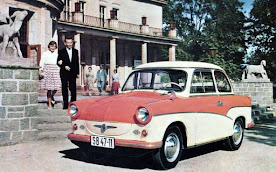Lollipop (pronounced lol-ee-pop)
(1) A (usually spherical or disc-shaped) piece of hard candy attached to the end of a small stick, held in the hand while the candy is sucked or licked (It was essentially a toffee-apple without the apple; a stick dipped in toffee and the older spelling used in the UK was lollypop (which exists still in modern commerce)).
(2) Something in a shape resembling the candy on a stick.
(3) In the UK, Ireland and the Commonwealth, as lollipop lady (and lollipop man), a school crossing attendant (based on the shape of the "stop/go" signs traditionally used and in the slang of children they're also "lollipoppers".
(4) In computer networking, a routing protocol using sequence numbering starting at a negative value, increasing until zero, at which point it switches indefinitely to cycle through a finite set of positive numbers.
(5) In the labeling of the Android operating system, v5.0 to 5.1.1.
(6) In motorsport, a circular sign on a long stick, used by a pit crew to covey messages to drivers (system still used despite advances in radio communication because (1) it's retained as a backup in case of system failure and (2) the messages can't electronically be monitored and done, with care, can be secret.
(7) In the slang of fashion and related photography, a term for very thin models whose heads thus appear disproportionately large.
(8) Figuratively, something sweet but unsubstantial (originally of literature).
(9) In the slang of musical criticism, a short, entertaining but undemanding piece of classical music, the idea being the pieces were of limited duration, immediately gratifying but really not good for one. They've always been popular.
1784: A creation of Modern English of uncertain origin but the construct may be the obvious lolly + pop. Lolly was from the Northern English dialect loll (dangle the tongue) and pop was an alternative name for “slap”. The alternative theory is it was borrowed from the Angloromani (literally "English Romani" and the language combining aspects of English and Romani), which was spoken by the Romani (gypsy, traveller, Roma etc) people in England, Ireland & Wales. It was in the twentieth century displaced by English but traces remain in the variant English used by modern Roma. The suggestion is of links with the Angloromani loli phabai (or lollipobbul (red or candy apple)), which was a blend from the Middle Indic lohita (from Sanskrit) and loha (red), drawn from reudh which had Indo-European roots. Among etymologists, the Angloromani connection has most support. Originally, lollipop seems to have referred just to the boiled sweet (ie "stickless) with the meaning "hard candy on a stick" not noted until the 1920s while the figurative sense (something sweet but unsubstantial) was in use by at least 1849. Used in the slang of catwalk photographers, the verb lollipopping (a stick-thin model walking down catwalk) and adjective lollipopish (a model close to thin enough to be a true "lollipop") are both non-standard. Among the pill-poppers, there seems to be a consensus that post-rave, the best lollipops are lemon-flavored. In commerce, the spelling varies including lollipop, lollypop, loli-pop, lollypopp and lolly-pop. Lollipop & lollipopper are nouns and lollipoplike is an adjective; the noun plural is lollipops.
In classical music criticism, the term “lollipop” refers to short, appealing and often melodically charming pieces which were nevertheless judged as “lightweight in musical substance”. Deployed often as “palate-cleansers” or encores, despite the opinions of many critics, composers, conductors and musicians, the bulk of the audience tended to enjoy them because in character they were often jaunty and playful, not something which endeared them to the earnest types who decided what deserved to be the canon of the “serious” repertoire in which complexity was valued above accessibility. A well-known exponent the genre was Johann Strauss II (1825–1899) and his An der schönen blauen Donau, Op. 314 (On the Beautiful Blue Danube (better known in English as The Blue Danube (1866)) and Tritsch-Tratsch-Polka, Op. 214 (Chit-chat (1858)) are exemplars of his technique. The reason the lollipops were and remain popular with general audiences (typically not trained in any aspect of music) is that they paid their money to be entertained by listening to something they could enjoy, not always the experience delivered by the composers who preferred “the experimental”, valuing originality over beauty; these were the “formalists” (as comrade Stalin (1878-1953; Soviet leader 1924-1953) once labeled comrade Dmitri Shostakovich (1906-1975) and they may be compared with the modern generation of architects churning out ugly buildings because prizes in their profession are awarded on the basis of work being “new” rather than “attractive”. Neither art deco nor mid-century modern buildings are in any way “lollipops” but the committees which award prizes in architecture probably think of them that way.
Many composers at least dabbled in lollipop production and some were memorable, French composer Claude Debussy’s (1862–1918) Clair de Lune (1890) hauntingly beautiful and demanding nothing more from a listener than to sit and let it wash over them; even comrade Stalin (who liked tunes he could hum) would have enjoyed it despite Debussy being French. Others were specialists in the genre including: (1) the Austrian-American Friedrich "Fritz" Kreisler (1875–1962) who published a few of his compositions under wholly fictitious “old” names to lend them some “classic” respectability, (2) the English conductor Sir Thomas Beecham (1879–1961) who had a reputation among his peers for treating his music with about the same seriousness as he handled his many relationships with women and it was his encores and brief “concert fillers” which more than anything popularized use of “lollipop” in this context; he was also a practical impresario who noted what pleased the crowd and sometime constructed entire concerts with them, (3) Leopold Stokowski (1882–1977), a British conductor of Polish extraction noted for his arrangements of the works of Johann Sebastian Bach (1685–1750), pieces for which the appellation “lush” would have had to been coined had it not existed and (4) the Australian Percy Grainger (1882–1961) a man of not always conventional tastes & predilections who enjoyed an unusually close relationship with his mother although whether any of that in any way influenced his folk-inspired miniatures (quintessential lollipops) is a matter for debate. What can’t be denied is that for the untrained, a hour or two of lollipop music will probably be enjoyed more than listening to the strains of stuff by Béla Bartók (1881-1945) or Arnold Schoenberg (1874–1951), the composers the critics think would be good for us.
How to make lemon lollipops
Among the pill-poppers (and there are a lot of them about), there seems, at least impressionistically, to be a consensus that post-rave, the best lollipops are lemon-flavored. It’s thought lemon lollipops work best in this niche because the acidic content interacts with taste receptors enjoying a heightened sensitivity induced by the pills’ chemistry. Ideally, pill-poppers should pre-purchase lemon lollipops and at all times carry a few (on the basis of the (Boy) Scout motto: “Be prepared”) but that’s not always possible because, there being so many pill-poppers, shops often are out of stock of the lemon flavor.
This recipe is therefore provided as a courtesy to pill poppers and, having shelf-life of weeks, lollipops can be prepared in advance; except for those popping at a heroic level, a batch should last a week so users should add the task to their routine, scheduling it perhaps after church every Sunday. Lollipop sticks and one or more (depending on production target) lollipop molds will be required and the volume of ingredients quoted here should yield 24 small or 10-12 large lollipops. Sticks and molds are available at supermarkets and speciality stores as are the small cellophane bags (needed only if some or all are being stored). The taste can be varied by (slightly) adjusting the volumes of sugar, citric acid & lemon oil and preferences will vary between pill-poppers who are encouraged to experiment. As a footnote, the small hole in the stick is there so a little bit of the melted candy sets inside, creating a "hook" to keep lollipop attached; without a hook, the candy could slide from the stick while subject to vigorous licking or sucking. A more recent innovation as been the hollow stick, a safety feature (a la the removable caps on many ballpoint pens) which permits air-flow to the lungs if stick is swallowed and becomes lodged in the throat.
Ingredients (lollipops)
1 cup (200
g) sugar
½ cup (120 ml) water
¼ cup (60 ml) light corn syrup
1¼
teaspoons citric acid
¾ teaspoon lemon oil
2-4
(according to preference) drops liquid yellow food coloring
Ingredients (sour powder)
½ cup (50 g) confectioners' sugar
2 teaspoons
citric acid
Directions (lollipops)
(1) Coat lollipop molds with non-stick cooking spray.
(2) Place lollipop sticks in the molds.
(3) Combine the sugar, water, and corn syrup in a large, heavy saucepan and then bring mix to a boil over medium-high heat.
(4) Continue cooking until mixture reaches 300°F (150°C) which is the “hard-crack” stage. Immediately remove saucepan from the heat. The timing is critical so watch pot during cooking.
(5) Add citric acid, lemon oil and food coloring and stir to combine. (Because of the acidic nature of the mix, don’t allow face to come too close to pot because fumes can irritate the eyes).
(6) Pour the mixture into a heatproof measuring container with spout (or a candy funnel (which every pill-popper should own)).
(7) Divide the mixture among prepared molds and leave lollipops to cool and harden. After about 15 minutes, they should be ready to remove from mold (may take longer if temperature or humidity are high).
Directions (sour powder)
(1) Mix confectioners’ sugar and citric acid in bowl.
(2) Holding by stick, dip lollipops in mixture, coating entire surface.
(3) Lollipops may immediately be consumed but if being stored, wrap in cellophane bags and twist-tie. Store lollipops in cool, dark, dry place (they'll remain in a “best by” state for about a month).
























